Workflow & Creative Process for Music Producers
A Soft Synced Companion Guide
Soft Synced Environment → Beginner Track → The Basics Course → Lesson 13
Introduction
Every producer develops a rhythm and not just in music, but in how they work. This rhythm is not about speed or discipline, rather, it’s about knowing which mode you’re in and responding accordingly. Productive sessions emerge when you recognize what the moment calls for: raw exploration, patient listening and observation, or decisive polishing. This guide expands on the four-phase cycle introduced in the Soft Synced app to help you build a repeatable creative system that keeps you moving even when inspiration fades.
1. Understanding the Creative Cycle
Most producers confuse technical progress with creative progress. But learning another technique or keyboard shortcut won’t automatically give you a better story to tell with your music. The creative process naturally oscillates between two states: generation (bringing ideas to life) and evaluation (making them better).
When you learn to separate those two, your work gains momentum. The four-phase cycle maps directly onto this principle. You’ll move back and forth, but always with a sense of direction.
Phase 1: Capture — Don’t Judge, Just Record
Capture mode is about motion, not precision. The goal is to externalize what’s in your head before it evaporates.
That might mean humming a melody into your phone, recording a synth jam, or chopping an old loop that caught your ear.
Set a low barrier: fewer settings, fewer decisions.
If you spend twenty minutes choosing a snare sample, you’re not capturing — you’re editing too early.
Try this: Keep one template called “Blank Capture” with a few ready-to-go tracks — drums, keys, mic input — so you can open it and hit record within ten seconds.
Phase 2: Discovery — Listening as a Creative Act
Discovery mode starts once you have material and some distance from it. It’s about listening for meaning, not mistakes.
Ask:
What mood does this sketch naturally carry?
Is there something surprising or accidental that stands out?
What story or image does it evoke?
Sometimes, discovery means not touching anything. Letting time pass resets your perception and helps your brain separate noise from signal. The key is curiosity — you’re not evaluating quality yet, you’re finding intent.
In practice: Bounce rough versions often, and listen on your phone while walking. New contexts reveal what matters most.
Phase 3: Refinement — Give Shape to Meaning
Once you sense what the track wants to become, you can apply technical focus.
Refinement doesn’t mean polishing endlessly — it means removing what doesn’t serve the idea.
Ask:
Does each sound earn its place?
Is the structure communicating the feeling clearly?
Have I kept enough of the raw energy from capture?
Tools like EQ, compression, and automation belong here — but not as rules to follow. They’re instruments for emphasizing intent. A refined track should feel clearer, not just louder or cleaner.
Common trap: endless tweaking. The trick is to define what you’re refining toward. Without a target, “better” becomes infinite.
Phase 4: Export — The Art of Letting Go
Exporting isn’t just bouncing audio; it’s a mindset. It marks a boundary — saying this version is finished enough.
Waiting for perfection is how projects die quietly.
Treat every export as a snapshot in your growth: each one captures how you heard the world at that moment.
Sharing your work closes one loop and opens the next.
Tip: Save dated versions (e.g., TrackName_2025-10-14.wav) so progress feels tangible rather than fragile.
2. Embracing the Mess
Real creativity refuses order. You’ll slip between phases constantly, discovering while refining, capturing mid-mix, exporting then reopening. And that is not failure; it’s just a sign of engagement and experiencing real-life flow. The value of the four-phase model is not to confine you but to help you notice where your mind currently is.
Awareness builds efficiency. Instead of fighting the mess, you learn to navigate it.
Producer FAQs
-
Usually because you’re mixing modes. You start editing while still discovering, or refining before you know what the track means. Try labeling each session (“capture,” “edit,” “final polish”) to set clear intentions and avoid creative whiplash.
-
When further changes stop serving clarity. If you’re tweaking out of habit rather than purpose, it’s time to print a version and move on. Often, distance and not another EQ adjustment, is what reveals whether it’s done.
-
Reframe them as exploration rather than failure. The uncertainty of capture and discovery is creative work. Professional producers spend most of their time there — polishing is just the final pass.
-
Yes. Make the phase visible: agree which stage you’re in before a session starts. For instance, “Today we’re in capture mode, so no edits yet.” It keeps everyone aligned and reduces friction.
Quick Reference
Creative Cycle
Capture → Discover → Refine → Export
Practical Focus
Separate idea mode from edit mode
Working Habit
Finish one full loop weekly to strengthen creative fluency.
Next Steps
Workflow is a mirror for mindset. The goal is to become fluent in the chaos of creativity. When you can recognize what mode you’re in, your tools become extensions of intent instead of obstacles.
Next up: Listening Like a Producer. How to get started on hearing through emotion and surface detail, shaping decisions with confidence.
The Guides are your reference. The app is your journey.
